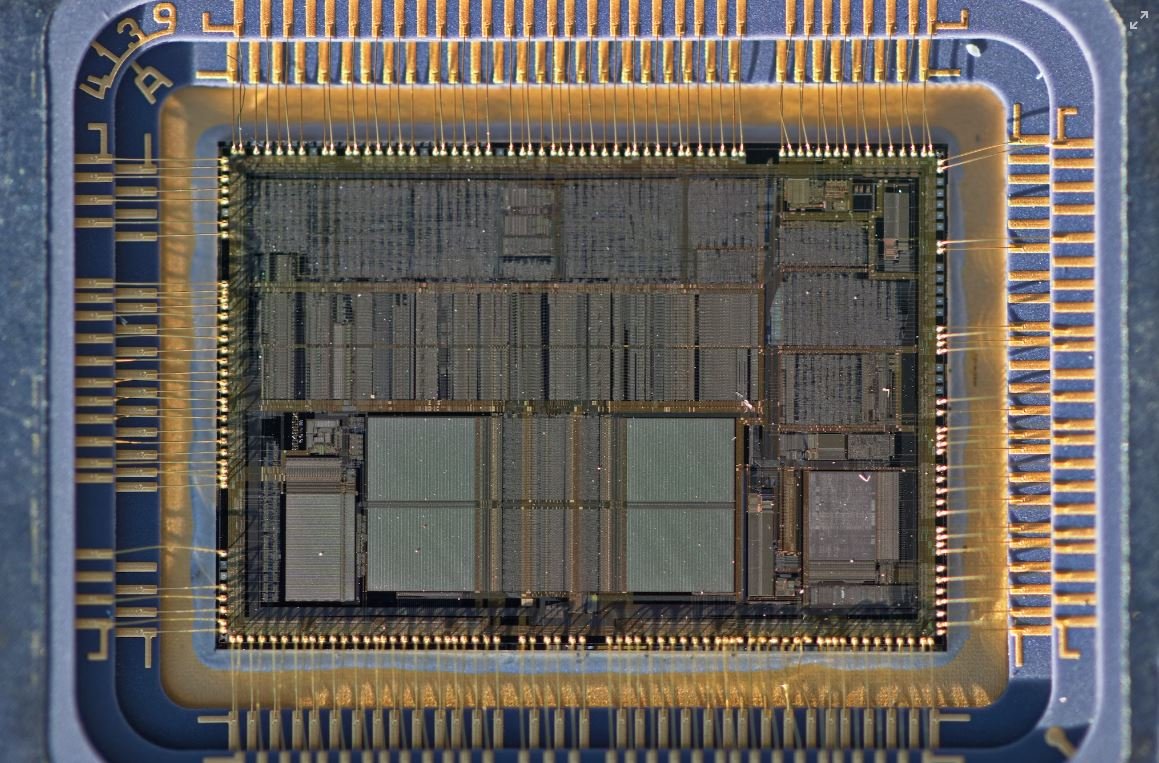When SpaceX Was Founded
Space Exploration Technologies Corp., better known as SpaceX, was founded by Elon Musk on May 6, 2002. Musk had a vision of revolutionizing space transportation and making Mars colonization possible. With this mission in mind, he established SpaceX with the goal of reducing the cost of space travel and ultimately enabling the colonization of other planets.
Key Takeaways
- Elon Musk founded SpaceX in 2002 to revolutionize space transportation and enable colonization of other planets.
- SpaceX’s mission is to reduce the cost of space travel and make space exploration more accessible.
- SpaceX has achieved numerous milestones and made significant advancements in reusable rocket technology.
The Early Years: 2002-2008
*SpaceX faced initial challenges, but successfully launched its first rocket, the Falcon 1, in 2006.
During its early years, SpaceX focused on developing the Falcon 1 rocket. The company faced several setbacks and financial struggles, but persevered to reach its goals.
Public Recognition and Notable Achievements
*In 2012, SpaceX became the first privately-funded company to send a spacecraft, the Dragon, to the International Space Station (ISS).
SpaceX gained public recognition and support as it achieved numerous groundbreaking milestones in the following years:
- Successfully launching the Falcon 9 rocket in 2010, which carried the Dragon spacecraft.
- Conducting the first successful docking of a privately-owned spacecraft to the ISS in 2012.
- Developing the Falcon Heavy rocket, capable of carrying heavy payloads and sending them to deep space destinations.
- Launching the Falcon Heavy in 2018, becoming the most powerful operational rocket in the world.
Notable SpaceX Launch Vehicles
| Launch Vehicle | First Flight | Payload Capacity to Low Earth Orbit (LEO) |
|---|---|---|
| Falcon 1 | 2006 | 450 kg (990 lb) |
| Falcon 9 | 2010 | 22,800 kg (50,300 lb) |
| Falcon Heavy | 2018 | 63,800 kg (140,700 lb) |
Advancements in Reusability
*SpaceX made significant strides in rocket reusability, reducing the cost of launches and improving sustainability.
The concept of reusability allowed SpaceX to disrupt the industry and significantly reduce the cost of space missions. By successfully landing and reusing the first stages of their rockets, they minimized the need for building new ones each time, saving substantial amounts of money.
Future Endeavors and the Starship
*The Starship is SpaceX’s ambitious project designed for long-duration space travel, Mars colonization, and beyond.
With a focus on long-duration space travel and the colonization of Mars, SpaceX’s newest project is the Starship. This fully reusable spacecraft is intended to carry both crew and cargo and aims to make interplanetary travel a reality. The company plans to use the Starship for missions to the Moon, Mars, satellite deployment, and even point-to-point travel on Earth.
Conclusion
Since its founding in 2002 by Elon Musk, SpaceX has consistently pushed the boundaries of space exploration and technology, making significant advancements in rocket reusability and achieving remarkable milestones. With its ambitious plans for the future, SpaceX continues to revolutionize the space industry and work towards enabling human exploration of planets beyond Earth.

Common Misconceptions
1. SpaceX Was Founded by Elon Musk Alone
- Elon Musk is indeed one of the co-founders of SpaceX, but he did not start the company single-handedly.
- Gwynne Shotwell joined SpaceX as vice president of business development and soon became the president and chief operating officer.
- There were other founding members, including Tom Mueller, who played a crucial role in developing the rocket engines for SpaceX.
2. SpaceX Launched Its First Rocket Successfully
- Contrary to popular belief, SpaceX did not succeed in its first rocket launch.
- The inaugural flight of Falcon 1 in 2006 ended in failure when the rocket suffered a fuel leak causing it to crash.
- It was not until the fourth attempt in 2008 that SpaceX successfully reached orbit with the Falcon 1 rocket.
3. SpaceX Only Focuses on Mars Exploration
- While SpaceX is known for its ambitions to colonize Mars, this is not the only focus of the company.
- The company has been contracted by NASA for various missions, including resupplying the International Space Station (ISS) with its Dragon spacecraft.
- SpaceX is also involved in developing the Starship spacecraft, which is intended for both crewed missions to Mars and other destinations within our solar system.
4. SpaceX Is a Privately Funded Company
- SpaceX initially relied on private funding from Elon Musk and other investors, but it also received substantial support from government contracts.
- It won a $1.6 billion contract from NASA to provide commercial cargo transport to the ISS, and later secured additional contracts for crewed missions.
- This demonstrates that SpaceX has a significant partnership with NASA and the government.
5. SpaceX Achieved Major Success Overnight
- While SpaceX is now celebrated for its numerous achievements, the company’s success did not come overnight.
- SpaceX faced numerous setbacks, including failed launches and financial difficulties, before achieving their breakthrough moments.
- Their persistence and dedication eventually led to milestones such as the successful landing and reusability of their rockets.

Table: SpaceX Funding
SpaceX has received significant funding throughout its existence. The table below showcases the funding rounds and the amounts raised.
| Funding Round | Amount Raised (in millions) |
|---|---|
| Seed Round | 1.2 |
| Series A | 12 |
| Series B | 50 |
| Series C | 20 |
Table: Notable SpaceX Rockets
SpaceX has developed a range of impressive rockets over the years. This table highlights some of their most notable rockets along with their capabilities.
| Rocket Name | Payload Capacity to Low Earth Orbit (LEO) (in kg) |
|---|---|
| Falcon 1 | 670 |
| Falcon 9 (v1.0) | 10,450 |
| Falcon 9 (v1.1) | 13,150 |
| Falcon Heavy | 63,800 |
Table: Recent SpaceX Launches
SpaceX has been actively launching rockets to deploy various payloads into space. The table below highlights some recent successful launches.
| Mission | Launch Date |
|---|---|
| Starlink 19 | March 11, 2022 |
| CRS-24 | January 3, 2022 |
| Transporter-5 | July 9, 2021 |
| Inmarsat-5 F4 | May 15, 2017 |
Table: SpaceX Launch Sites
SpaceX operates from multiple launch sites to support its missions. The following table provides information on some of their primary launch sites.
| Launch Site | Location |
|---|---|
| Cape Canaveral Space Force Station, Florida | United States |
| Kennedy Space Center, Florida | United States |
| Vandenberg Space Force Base, California | United States |
| Space Launch Complex 40 (SLC-40) | Cape Canaveral, Florida |
Table: Human Spaceflights by SpaceX
SpaceX has played a pivotal role in facilitating human spaceflights. The table below showcases some of the notable crewed missions.
| Mission | Launch Date | Duration (days) |
|---|---|---|
| SpaceX Demo-2 (Crew Dragon) | May 30, 2020 | 64 |
| SpaceX Crew-1 (Crew Dragon) | November 15, 2020 | 167 |
| SpaceX Crew-2 (Crew Dragon) | April 23, 2021 | 199+ |
Table: SpaceX Satellite Constellations
SpaceX has been deploying satellite constellations to enhance global communication. The table below presents details about two prominent satellite constellations.
| Satellite Constellation | Number of Satellites | Purpose |
|---|---|---|
| Starlink | 1,428+ | Global broadband internet coverage |
| Starship | 0 (prototype for interplanetary transport) | Exploration and colonization of Mars and beyond |
Table: Achievements of SpaceX
SpaceX has achieved numerous significant milestones in space exploration. The table below highlights some of their key accomplishments.
| Year | Achievement |
|---|---|
| 2010 | First privately funded spacecraft (Dragon) to reach orbit and return |
| 2012 | First private company to send a spacecraft (Dragon) to the International Space Station (ISS) |
| 2018 | First reusable orbital-class rocket (Falcon 9 Block 5) |
| 2020 | First private crewed mission to orbit (Crew Dragon) |
Table: SpaceX Mars Missions
SpaceX envisions exploring Mars and making humanity a multi-planetary species. The following table provides information on their planned missions to Mars.
| Mission | Launch Date (Planned) |
|---|---|
| Starship Test Flight (Uncrewed) | 2023 |
| Starship First Crewed Mission | 2024 |
Table: SpaceX Growth and Valuation
SpaceX has experienced tremendous growth and its valuation has skyrocketed over the years. The table below showcases its estimated valuation during different funding rounds.
| Funding Round | Valuation (in billions) |
|---|---|
| Series A | 1.5 |
| Series E | 12 |
| Series H | 74 |
| Current Valuation (2022) | 100+ |
SpaceX, founded by Elon Musk in 2002, has rapidly evolved into a trailblazer in the space industry. The company has achieved remarkable milestones, including pioneering privately funded spacecraft, sending crewed missions to the International Space Station, and developing reusable orbital-class rockets. Aiming to revolutionize space travel and colonization, SpaceX has also deployed satellite constellations and is actively planning missions to Mars. With multiple successful funding rounds and exponential growth, the current valuation of SpaceX surpasses 100 billion dollars.
In conclusion, SpaceX’s journey since its foundation has been nothing short of awe-inspiring. Through their relentless pursuit of innovation and remarkable accomplishments, Elon Musk’s visionary space company continues to push the boundaries of space exploration, bringing humanity closer to a future among the stars.
Frequently Asked Questions
What is the history of SpaceX?
Space Exploration Technologies Corp., better known as SpaceX, is an American aerospace manufacturer and space transportation company. Founded by Elon Musk in 2002, SpaceX’s primary goal is to reduce the cost of space transport and enable the colonization of Mars. Since its inception, SpaceX has achieved several milestones, including becoming the first privately funded company to launch a liquid-propellant rocket into orbit.
What motivated Elon Musk to establish SpaceX?
Elon Musk was inspired by Mars Society founder Robert Zubrin’s “Mars Direct” plan, which laid out a cost-effective strategy for human exploration of Mars. Musk saw the high costs and lack of innovation in the space industry as an opportunity to create a company that could revolutionize space travel. With SpaceX, Musk aims to make space travel more accessible and affordable, ultimately enabling the colonization of other planets.
What are SpaceX’s major achievements so far?
SpaceX has achieved numerous significant milestones in its relatively short history. Some of its major achievements include being the first privately-funded company to successfully launch a liquid-propellant rocket, the Falcon 1; being the first privately-funded company to send a spacecraft, Dragon, to the International Space Station (ISS); and being the first to successfully land a first-stage orbital rocket booster back on Earth.
What vehicles does SpaceX currently operate?
SpaceX operates two main rocket systems:
- Falcon 9: A two-stage rocket designed for the reliable and cost-effective transport of satellites and the Dragon spacecraft. The Falcon 9 has successfully launched numerous missions, including cargo resupply missions to the ISS.
- Starship: Currently in development, Starship is a fully reusable spacecraft intended for long-duration space travel and eventual colonization of Mars. It is expected to replace the Falcon 9 and Falcon Heavy rockets.
What is SpaceX’s contribution to reusable rockets?
SpaceX has been at the forefront of developing and implementing reusable rocket technology. The company’s ambition to reduce the cost of space travel led to the development of the Falcon 9 rocket, featuring reusable first-stage boosters. SpaceX has successfully landed and recovered these boosters multiple times, significantly reducing the expense of launching payloads into orbit. The company’s continuous innovation in this area has paved the way for reusability becoming a norm in the space industry.
What is the Starlink satellite constellation?
Starlink is a satellite constellation being constructed by SpaceX to provide satellite internet access across the globe. The project aims to deploy thousands of small satellites in low Earth orbit, forming a mesh network that can deliver high-speed internet connectivity to even the most remote areas. The Starlink constellation is expected to offer global coverage and significantly improve internet access worldwide.
What are SpaceX’s future plans?
SpaceX has several ambitious plans for the future. Some key initiatives include:
- Continuing the development and testing of the Starship spacecraft for missions to Mars and beyond.
- Expanding the Starlink satellite constellation to provide global internet coverage.
- Launching the Crew Dragon spacecraft to transport astronauts to and from the ISS, reducing reliance on Russian Soyuz spacecraft.
- Exploring the potential of point-to-point travel on Earth using Starship, enabling ultra-fast intercontinental transportation.
How does SpaceX contribute to space exploration?
SpaceX is contributing to space exploration in various ways:
- By developing and launching spacecraft capable of resupplying the International Space Station, SpaceX has played a pivotal role in maintaining human presence in space.
- Through the Starship project, SpaceX aims to enable crewed missions to Mars and potentially other destinations within our solar system, expanding the frontiers of human exploration.
- By reducing the cost of space travel, SpaceX has helped make space more accessible for scientific research, satellite deployment, and commercial space ventures.
How does SpaceX work with NASA?
SpaceX has a strong partnership with NASA. The company has been awarded multiple contracts by NASA, including a Commercial Resupply Services (CRS) contract to transport supplies and equipment to the ISS using the Dragon spacecraft. SpaceX also collaborated with NASA on the Commercial Crew Program, which aims to develop safe and reliable crew transportation to and from the ISS, resulting in the development of the Crew Dragon spacecraft.
What impact has SpaceX had on the space industry?
SpaceX’s impact on the space industry has been profound. By introducing reusable rockets and driving down launch costs, SpaceX has disrupted the traditional space industry and ignited a new era of space exploration and commercialization. The company’s achievements have spurred competition and innovation, inspiring other companies to pursue ambitious goals and revolutionize the way we access and utilize space.




